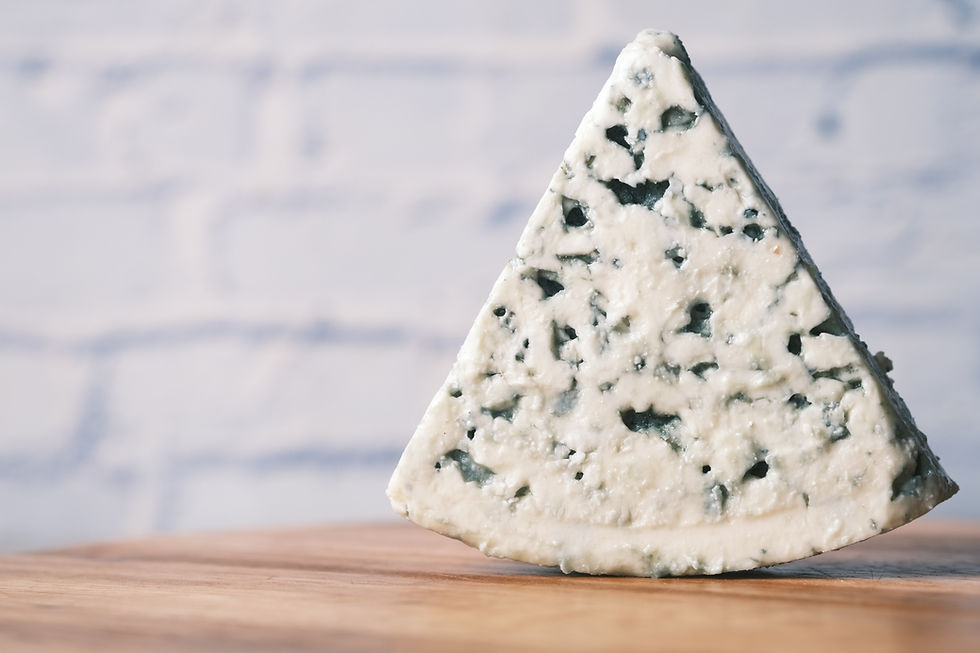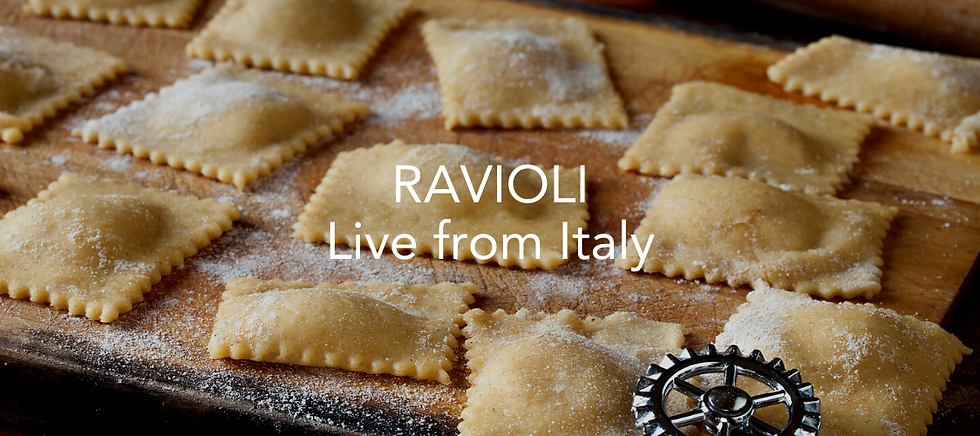How to Cook Like an Italian
- The Chef & The Dish
- Oct 13, 2022
- 5 min read
Updated: Nov 11, 2024

What is often considered the world's food, learning how to cook like an Italian is a romantic dream for many. Perhaps the greatest example of a country known world over for their food, Italians have built a reputation for wonderful food that's deeply satisfying. Italian food is a love language, with each family having their own dialect, adding a touch of this and a touch of that.
It's nearly impossible to teach the nuances of Italian cooking, which is why the best way to learn how to cook like an Italian is to take an Italian cooking class with The Chef & The Dish chefs, video calling you live from Italy. In your class, you'll cook - with an Italian. A real Italian, a chef who lives and breathes their most famous recipes every day. Italian cooking is a feeling. In your Italian cooking class, you won't just learn the recipe, you'll learn the art, just like Nonna would teach. As a precursor to your class, these tips will graduate you to Italian Cooking 201, teaching you the basic principles of Italian cooking.

USE HIGH QUALITY ITALIAN INGREDIENTS
Authentic Italian food can be surprising simple. As compared to Thai or Indian cooking, where the list of ingredients can span a page for one recipe, Italian food often uses few ingredients, but those ingredients are simply, the best. Italians visit the market daily. The markets are fashion events with seas of produce, meats and cheeses beautifully displayed. Vendors take great pride in their markets and locals know where to find the best of the best. When making Italian food at home, the key is to spend that extra bit on the best quality product you can find. Visit your local Italian market and buy ingredients Made In Italy. Look for the DOP stamp and understand Italian food labels. The DOP stamp means you're buying the highest quality product that has received the Italian government's seal of approval.

LEARN TO COOK BY SEASON
Italians cook by season, and each region of Italy has different seasonal ingredients. Authentic Italian food is so much more than pasta and sauce. It's risotto, roast pork, grilled octopus, fried anchovies, polenta, beans, and the list goes on and on. Learning how to cook with the season means your produce should change with what's available to you. When you cook with seasonal ingredients, you'll use the most delicious produce available. That freshness makes a huge difference in the quality of your final dish.

LEARN HOW TO PROPERLY COOK PASTA
In your Italian cooking class, your chef, video calling you live from Italy, will teach you many important things about cooking pasta. Cardinal rules are as follows... Always salt the water. Never use oil. And never throw away your pasta water. Pasta water is referred to as "Italian Gold" and while it's not on the list of ingredients, it should be. Repeat after us. Never. Throw. Away. Your. Pasta. Water. Another cardinal rule is to cook your pasta to "al dente" which translates to "to the tooth" referring to a texture you should feel when you bite into the pasta. Your pasta should have a slight bite, and the teeniest dot of white in the center. Finishing your pasta is a critical step in learning how to cook like an Italian, and each dish you make will have a different set of instructions. One that will always hold true is to never just top your pasta with sauce. You should cook your pasta in the sauce before serving.

EXPLORE DIFFERENT PASTA SHAPES
Outside Italy, we tend cook with a short list of pasta shapes. Spaghetti, Penne, Rigatoni, Angel Hair, Orzo, Farfalle, Fusilli, Linguine, Ziti, and occasionally Pappardelle and Orecchiette. In Italy, there's a world of pasta shapes and each designed for the sauce it pairs perfectly with. Cavatelli, Cappelletti, Bavette, Bigoli, Campanelle, Ditalini, Garganelli, Mafalda, Pastina, Strozzapreti and the list continues. If you've never heard of Trofie, it's the pasta shape that pairs best with pesto. Did you visit Rome and fall in love with Amatriciana? Use Bucatini pasta. Visit a local Italian market and learn about new pasta shapes to transform your kitchen into an authentic Italian Osteria.

MASTER ITALIAN MOTHER SAUCES
Sauces are often associated with French cooking, however Italy has important Mother Sauces native to the country. Of course there's Pomodoro sauce, a simple sauce made with tomatoes, basil and the essence of garlic. But more than that simple red sauce is Ragu is the traditional meat sauce that originated in Bologna, Italy, and Neapolian Ragu is a variation from the southern part of the country. Then there's Bescimella, a creamy white sauce critical in a proper lasagne. Pesto is famously the sauce of Liguria filled with aromatic basil and a mix of Parmigiano Reggiano, Pecorino Romana and pine nuts. Learning the different sauces of Italy will open a world of Italian cooking in your own home.

MASTER RISOTTO WITH PROPER TECHNIQUE
While some think risotto is a laborious dish, you couldn't be more inaccurate. After taking a risotto cooking class with The Chef & The Dish, our Italian chefs will teach you the simple technique to make risotto so easy, it will be a weeknight staple. Risotto is a blank canvas that allows you to play with ingredients. It's seasonal eating at it's best. Enjoy a Porcini Mushroom Risotto in fall, a Strawberry Risotto in summer, a Sweet Pea Risotto in Spring and a hearty Sausage and Red Wine Risotto in cold winter. Risotto will take no more than 20 minutes to cook, and is mostly hands off. Understand the steps of heating your rice with aromatics, adding the tartness of wine, slowly adding hot broth and allowing it to rest until it's time to mix, mix, mix. Once you learn these important techniques, you'll have a creamy and umami rich rice that transports you to Italy on an average Tuesday.

EXPLORE ITALIAN CHEESES
Italian cheese is complex and far more than Mozzarella and Parmigiano Reggiano. Explore your local Italian market to find new Italian cheeses like Burrata (perfect with roasted tomatoes) Gorgonzola (simply decadent when poured over gnocchi) Marscapone (the key ingredient to an Italian tiramisu), Taleggio (mind blowing on a pizza with pickled onions) and the list goes on and on. To learn how to cook like an Italian means you must explore new Italian ingredients, taste and enjoy.

EXPLORE ITALIAN SEAFOOD
Look at a map of Italy, and you'll see the country is nestled amongst water, and out of those seas come some of the most incredible seafood in the world. From fish to clams, prawns, octopus and mussels, authentic Italian cooking uses the sea as its inspiration. At the Italian market, don't overlook canned seafood. Tinned seafood is very high quality in several European countries and can turn a simple salad to a masterpiece. Learn how to work with Italian seafood in a Seafood Pasta class. You'll learn to make Mussels Gratin, Seafood Pasta and a spicy mussel dish that any heat-loving Italian will crave.

EXPLORE NATIVE ITALIAN VEGETABLES
Cooking like an Italian doesn't just mean using tomatoes. Italian vegetables vary throughout the country. Popular vegetables include fennel, artichokes, porcini mushrooms, olives, truffles, pumpkin, and cucuzza a Sicilian summer squash, bitter lettuces like radicchio, and chicory found in the wild across the country. Learning how to work with native Italian vegetables will open a world of authentic Italian cooking in your own home.
RELATED
ABOUT THE CHEF & THE DISH
The Chef & The Dish has chefs around the world that you video conference into your kitchen for a private 1:1 virtual cooking class. Learn how to make pasta with a chef video calling you live from Italy, Pad Thai with a chef virtually in your kitchen live from Thailand. Together you cook, share stories, laugh and make a multi course meal together. Rated 'Best Date Night,' 'Best Gifts,' and "Best Cooking Classes" by WSJ, Forbes, Vanity Fair, Martha Stewart, Rolling Stone and tens more. Transport your kitchen for the day.™























Comments